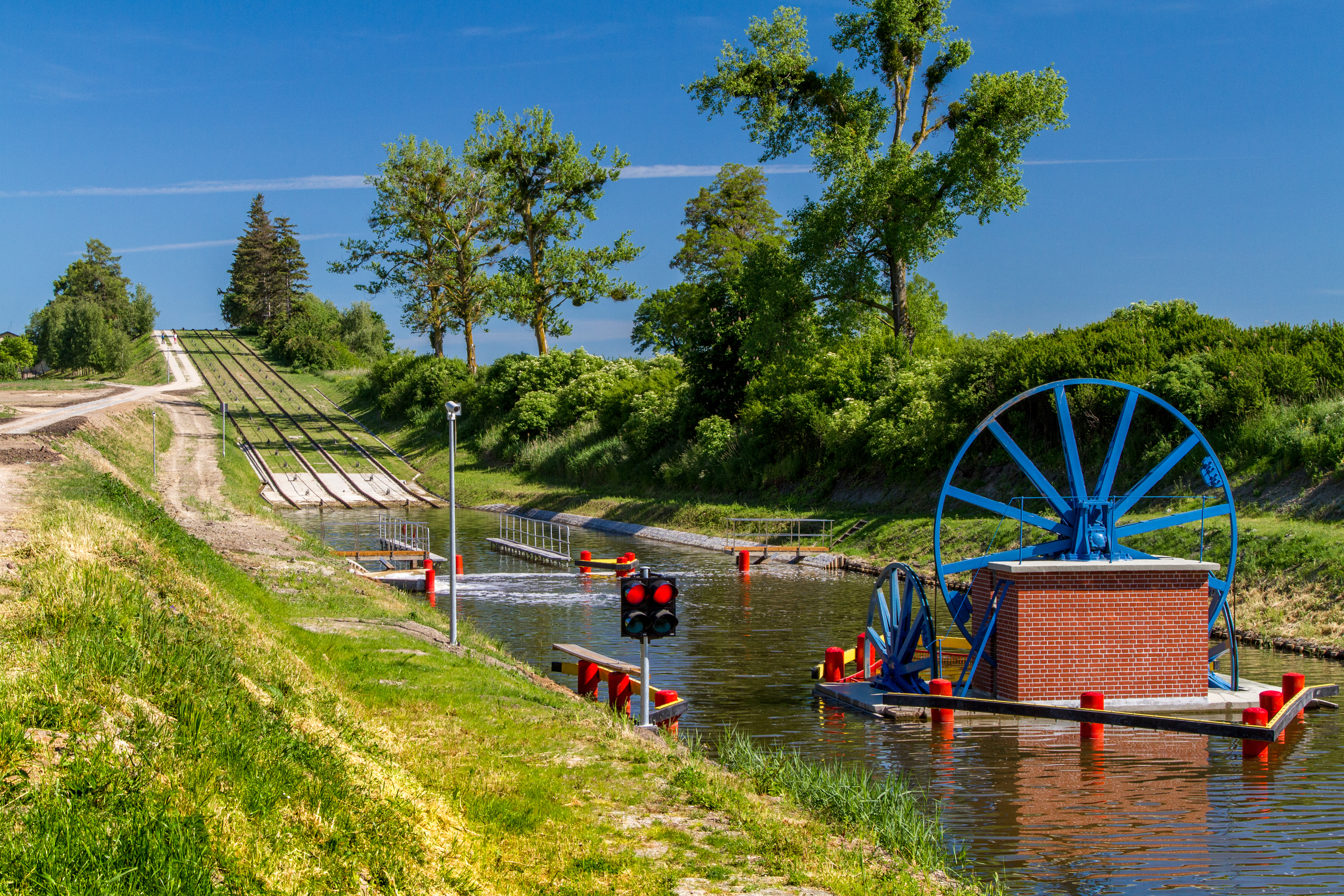[vc_row type="in_container" full_screen_row_position="middle" scene_position="center" text_color="dark" text_align="left" overlay_strength="0.3" shape_divider_position="bottom"][vc_column column_padding="no-extra-padding" column_padding_position="all" background_color_opacity="1" background_hover_color_opacity="1" column_shadow="none" column_border_radius="none" width="1/1" tablet_text_alignment="default" phone_text_alignment="default" column_border_width="none" column_border_style="solid"][vc_column_text]
In the north of Poland, hiding somewhere in the middle of the fields and the lakes of the Warmian-Masurian voivodeship, there’s a real treasure, unique in the scale of the world, that definitely deserves the title of one of the 7 Wonders of Poland. Yes, we’re talking about the Elbląg Canal, which attracts tourists from all over the world, fascinated by its location and the ingenious engineering that stands behind it.
From commercial ships to touristic cruises
Designed in the 19th century by Georg Senke and opened in 1860, the Elbląg Canal (at that time known as the Oberländischer Kanal, as it this area used to be part of the Kingdom of Prussia) is one of the most significant monuments of hydro-engineering. It connects the Masurian lakes with the Vistula Lagoon and it is over 80 kilometers long.
The canal was constructed to create a trade route between East Prussia and the Baltic Sea. Until the beginnings of the 20th century it was used mainly by commercial ships. Goods such as wood, produce, coal and building materials were transported and then embarked in larger ships to be taken further to Northern Europe. Over time, as other transportation channels developed (especially the railway network)., the canal lost its importance as a fast and reliable trade route.
Already before the First World War, in 1912, first touristic cruises were organized. And they were a success! The natural beauty of the landscape combined with incredible engineering just had to make the Elbląg Canal a popular tourist destination.

Sailing through the grass
Ok, ok. But what’s so special about taking a cruise along the Elbląg Canal, you may wonder? Well, apart from the beautiful nature that surrounds it and which in itself is already a good reason to embark a ship and enjoy your cruise, the thing is that the difference in water levels that has had to be dealt with is over one hundred meters.
One hundred meters! Can you imagine? That would be a challenge for engineers even in the present days. And bear in mind that the canal was built in the times when no computers were available, and no modern machinery. The difference in water levels was too high to resort to traditional locks, so a system of inclined planes with rails was employed instead. At first there were four inclined planes. In the 1870’s another one was built to replace the wooden locks near Elbląg.
When a ship approaches one of the planes, it sails onto a cradle-like platform and is then pulled with a cable, giving you a fabulous and one-of-a-kind sensation of sailing through the grass.

The power of water
The machinery of the canal is propelled by water wheels, which are set in motion by the power of water. What’s interesting and really unique, original machinery and buildings have been used for over 150 years.
Of course, the Second World War took its toll upon the Canal and it had to be repaired after war damage. It was restored in operation in 1948 and is being used for tourism and recreation. Since then it has undergone other repairs and renovations. But all these interventions were only made to maintain the Canal in operation, with no significant changes to the whole infrastructure.
If you’re visiting Poland and planning to take our Polish Delight Tour, you’re lucky! The Elbląg Canal is included in the itinerary, so be prepared to take a cruise you’ll never forget.
 LET'S DESIGN YOUR TOUR!
LET'S DESIGN YOUR TOUR!